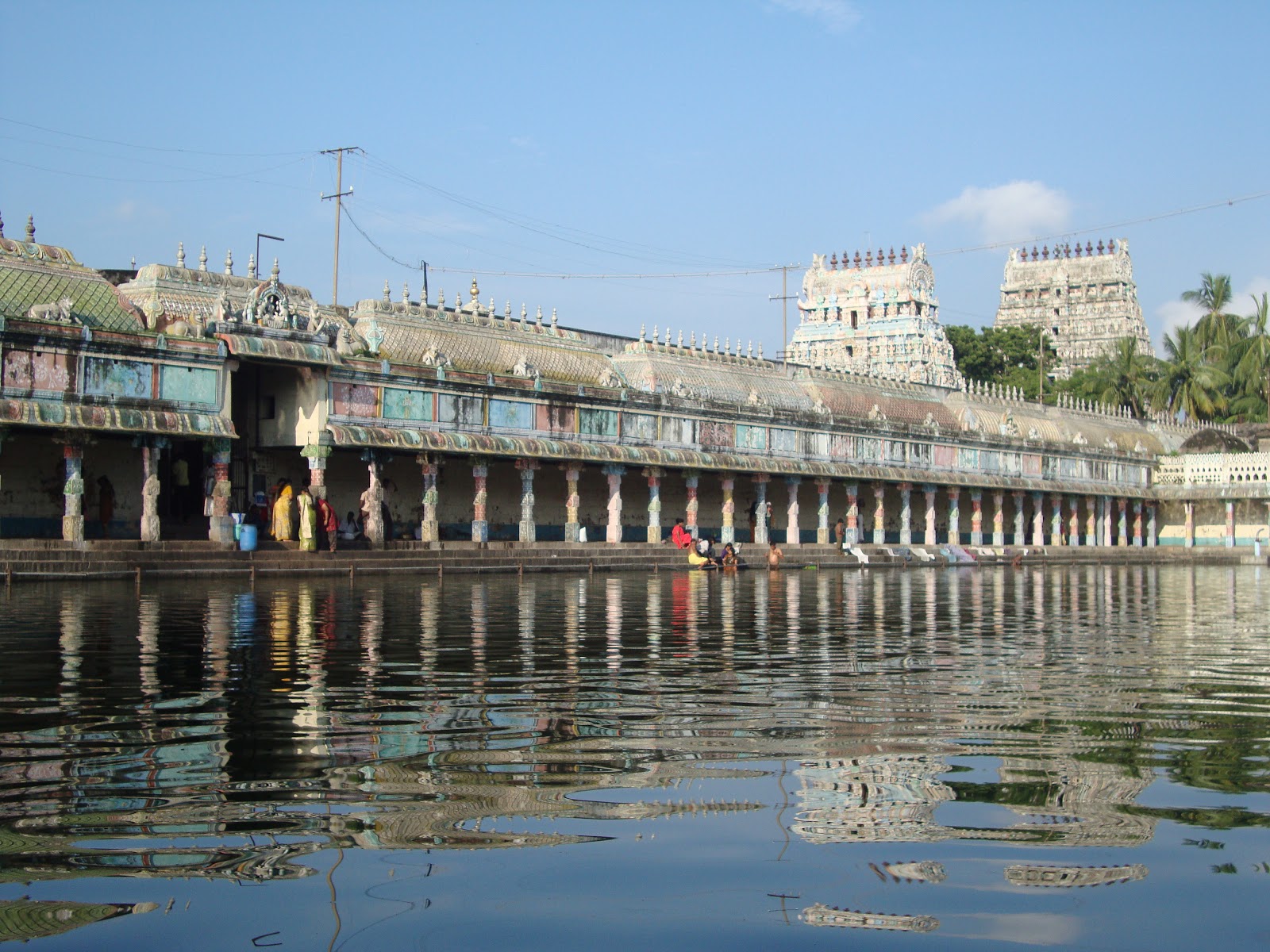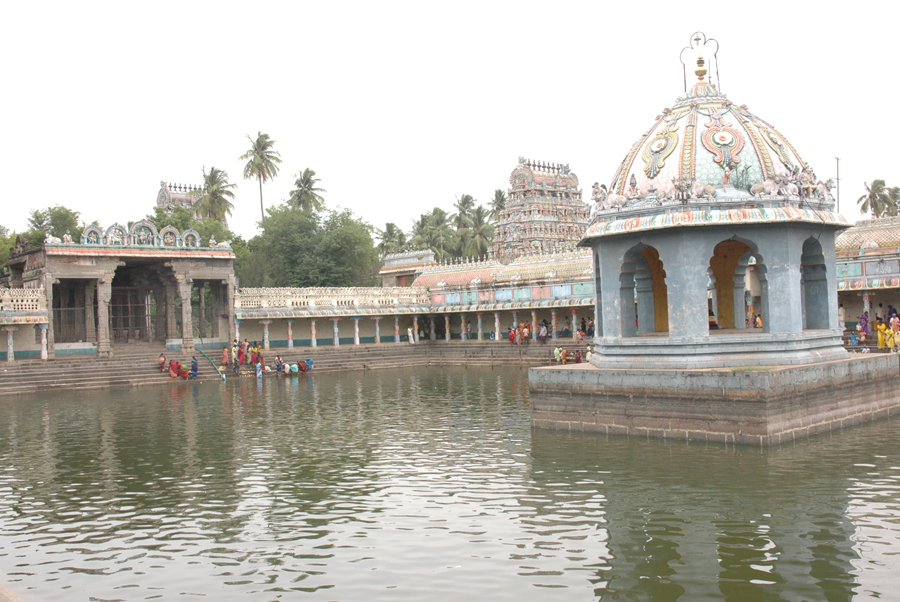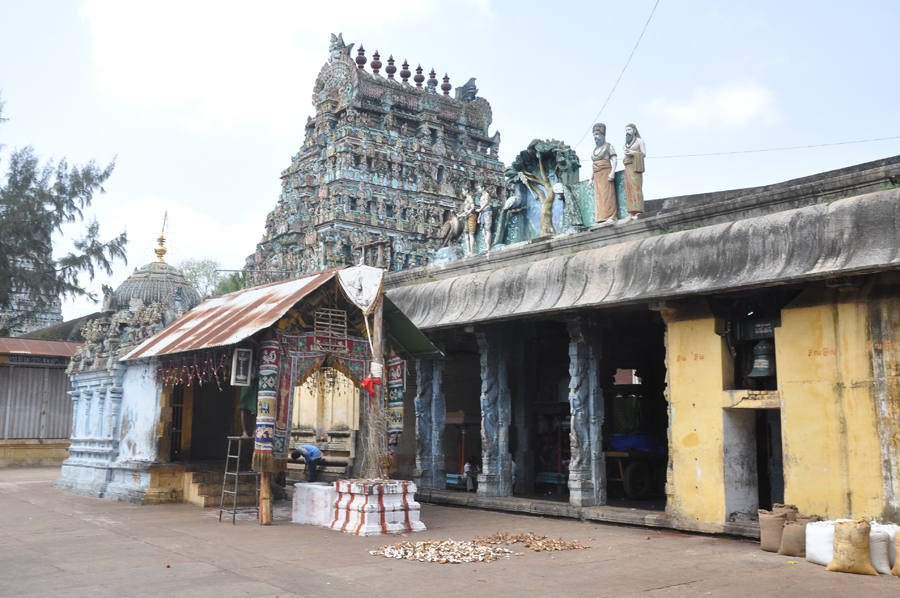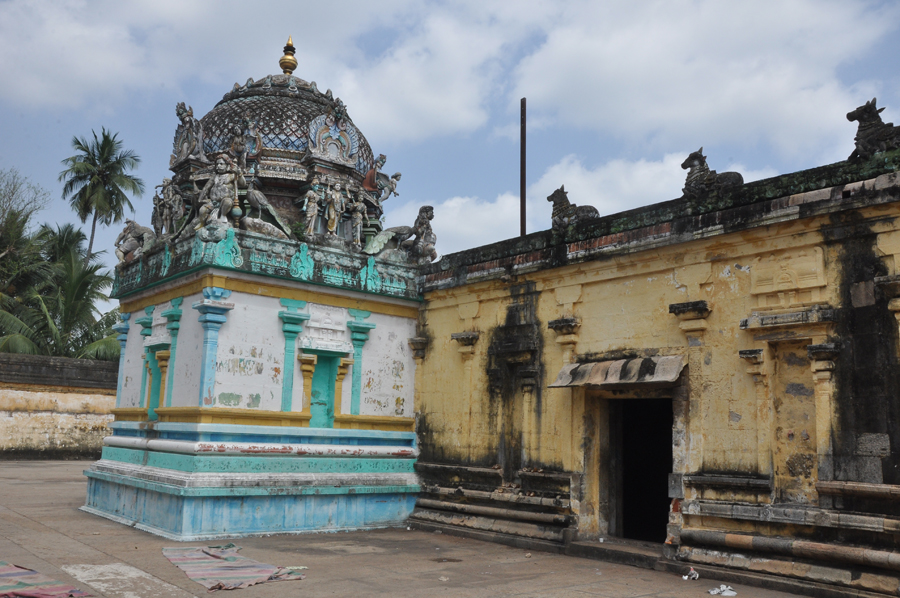
An Overview
This sthalam (holy Place) is one of the Nine Navagraha (Nine planets) Temples in Tamil Nadu with Shiva as the main deity. It is associated with the planet Angaraka or Sevvai or Kuja (Planet Mars).
This is the 16th temple of the 276 dedicated to Lord Shiva on the northern bank of River Cauvery called Thevara Padal Petra Sthalams or places praised by Saiva saints in the ancient Tamil hymns called Thevaram and Tirupugazh. Vaitheeswaran Koil has an instant recall because of the hundreds of palm leaf manuscripts stored here that are essential for the astrological predictions called Naadi Josiam which is an another attractions here, which known to everyone.
Story About the Temple
The term Vaitheeswaran means ‘Lord of Medicine or Doctor’in Tamil. Legends say that Mars or Angaraka was suffering from leprosy and was cured by Lord Vaidhyanathaswamy.
Hence, it is believed that a bath in the holy waters of the Siddhamirtham tank will cure all diseases.
A mark on Epic
Another event from the Ramayana says that Lord Rama and Lakshmana did the last rites of the giant bird Jatayu in this kshetram (holy place). Jatayu was the nephew of Garuda, the bird associated with Lord Vishnu and his vehicle. Jatayu was the friend of Rama’s father, King Dasaratha and lived in the glade near Rama’s hermitage in the Dandaka forest. He tried to rescue Sita and fought valiantly with Ravana kidnapped her. When Ravana was taking her away to Lanka in the air-borne Pushpak Vimana, Jatayu heard Sita’s cry for help and rushed to rescue her. As Jatayu was very old, Ravana defeated the bird and chopped off his wings. Rama and Lakshmana came upon the stricken and dying Jatayu when they were searching for Sita. Jatayu informed them of the fight and the direction, towards South, in which Ravana had gone. Rama performed the cremation of the bird and a pond called Jatayu Kundam is part of the Vaitheeswaran Koil complex.
The Tamil name for Vaitheeswaran Koil Pullirukkuvelur (Pul – Irukku, Vel – Ur) is derived from Jatayu (Pull), Rig Veda (Irukku), Skanda (Vel) and Surya (Ur) who worshiped Shiva in this temple. Another important legend says that the Saptarishis (Saptha means seven in Sanskrit; rishi means sages - Seven Sages) worshipped Lord Shiva here.
The famous Tamil poet Arunagirinathar sang his Thiruppugazh hymns on this temple’s Murugan. Saints like Kumaragurupara Swamigal, Ramalinga Adigalaar and poets like Kaalamega Pulavar and Padikkasu Tambiran sang hymns on this temple. Valuable inscriptions from the period of Vikrama Chola (12th century CE), the Nayakas (16th century CE) and the Marathas (18th century CE) are records of history that can be seen in Vaitheeswaran Koil. The temple is situated on the northern side of the Cauvery River.
Glimpses of the Temple
Evolution
As you enter Vaitheeswaran Koil from the western side, you will walk through a bazaar that sells objects, icons and other items associated with religion. You will also find flower garland sellers who tend to pester you to take a plateful of offerings. As soon as you enter the second prakaram (enclosure) watch out for the elephant and the mahout. The elephant loves bananas and coconuts and will pass on any coins or notes that you give him to his mahout. Sometimes in the morning, he would have gone off to have a bath in the Cauvery.
The next important thing to see is the vast temple pond with slippery steps. There are around eighteen theerthams (holy tanks) in Vaitheeswaran Koil. The Siddhamirtham pond just opposite Thailanayagi Ambal’s shrine is the most important one. The nectar with which the Siddhas (saints) worshipped Lord Shiva is said to have flown into this pond.

The Siddhamruta Theertham is known to have medicinal properties. It is also known as Goksheera (Sanskrit: Gho: Cow; ksheera: Milk) Theertham as the sacred cow Kamadhenu’s milk flowed into this tank when she performed abhishegam (ablution) to the Shivalingam with her milk. The water tastes sweet, like sugarcane juice, and is therefore known as Ikshusara (Sanskrit: ikshu: cane; sara: juice) Theertham. As Jatayau had his bath here, it is also known as Jatayu Theertham. Devotees buy jaggery/gur (molasses) from shops outside the temple and dissolve it in the water here. Nowadays the temple administration is strict about keeping the water clean and discourages this practice. A separate bin has been placed near the temple tank to deposit the jaggery. After a dip in the tank or doing Prokshanam (sprinkling water on one’s head) you can have a Darshan of Vinayakar (Ganesha), the son of Shiva and Parvathi.
People buy little cones of whole pepper and crystals of sea salt that used to be immersed in the pond. These days, you can dissolve them in a little tank of water near the vendor. This dissolving of pepper and salt symbolizes the disappearance of any disease.
Inside the temple you will see pillars, rectangular pieces of stone neatly set one on top of the other, the platforms where numerous deities, distinct from each other, are lined up and the light filtering through the passageways inspiring devotion and awe. The structure of the temple is amazing as you wonder how so much effort could have been put into so many temples in this area using hands and rudimentary equipment and no technological aids and machines.
Walk into the sanctum to have a darshan of Vaidhyanathaswamy. Lord Shiva is a swayambumurthi (self-manifested image) in Vaitheeswaran Koil. The Maragatha Lingam (Emerald Lingam) is very famous. There are two Dwajasthambams or Kodimarams (Flag posts) before the presiding deity that are made of silver and gold.

Navagrahas, the nine planets, are generally placed in front of the sanctum facing different directions in Shiva temples. In Vaitheeswaran Koil they are installed behind the sanctum in a line with each deity representing a planet placed next to each other. Angaraka or Mangal (Planet Mars) worship is of great importance in Vaitheeswaran Koil. Also known as Sevvai or Chevvai, the bronze image of Angaraka is taken out in procession on a mount shaped like a goat every Tuesday, the day considered to be an auspicious day to worship Mars. Angaaraka or Mars is described as one with a fiery red complexion and is attired in red. He is the overlord of the zodiac signs of Aries and Scorpio and is considered the strongest planet in the zodiac sign of Capricorn.
Lord Muruga, Siva’s son, has a special place and shrine and is worshipped in Vaitheeswaran Koil as Selva Muthu Kumaraswamy. The temple also has a shrine dedicated to Lord Dhanvantari or Dhanwantari, an avatar of Lord Vishnu and the Lord of Ayurveda, the Indian system of medicine. Another important feature of the temple is the shrine dedicated to Jvaraharesvara (Lord of Fevers).
Usually in Shiva temples, you will find Gajalakshmi behind the sanctum, and this beautiful deity, supported by elephants with their trunks raised, occupies her customary place in Vaitheeswaran Koil. Other figures of Natarajar, Durgai, Dhanvantri, Dakshinamurthy, Sattanathar (Shiva, the law giver from nearby Sirgazhi) can be seen as you do the pradakshanam (cicumambulation) of Lord Vaidhyanathaswamy’s sanctum.
It is believed that Rama and Lakshmana cremated Jatayu here. The Jatayu Kundam with a shrine for Rama, Lakshmana and Sages Vishwamitra and Vasishtha, the teachers of the Ayodhya brothers ,and Jatayu are near the Jatayu Kundam.

Near the eastern Gopuram (tower) are the deities Palaniandavar (Muruga of Palani) and Angarakan (Moolavar or stone figure of Mars). The sthala vruksham (temple tree) is the healing neem tree which can be seen in the outer praharam (circumambulatory path). This tree in various forms is supposed to have been in existence since Kritayuga. It took the form of the Kadamba tree during the Kritayuga, the Vilva tree during the Tretayuga, the Vakula tree during the Dwaparayuga and in the current epoch of Kaliyuga, it is in the form of the Neem tree. You can see the deity of Aadhi (Primary) Vaitheeswaran under the Neem.
Nethrapidi Sandhanam and Thiruchandu Urundai are two of the prasadams which are believed to cure all ailments. Thiruchandu Urundai is a medicinal pellet that was given by Vaidhyanathaswamy to Angarakan to cure his leprosy. It is prepared from the ashes of the Homa Kundam (fire ritual receptacle). Nethrapidi Santhanam is a paste made by mixing sandalwood powder and saffron with water. This is applied on Muthukumaraswamy’s (Muruga) forehead before being given as medicine to devotees.


